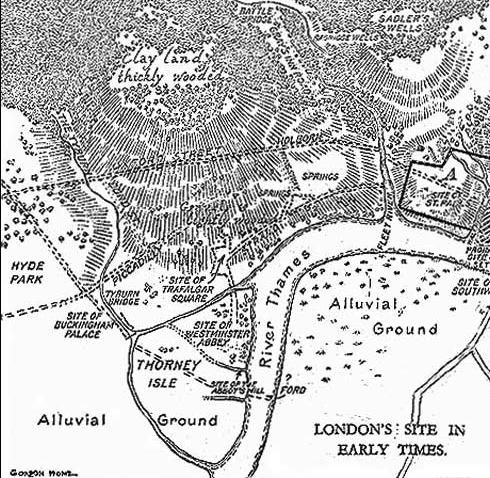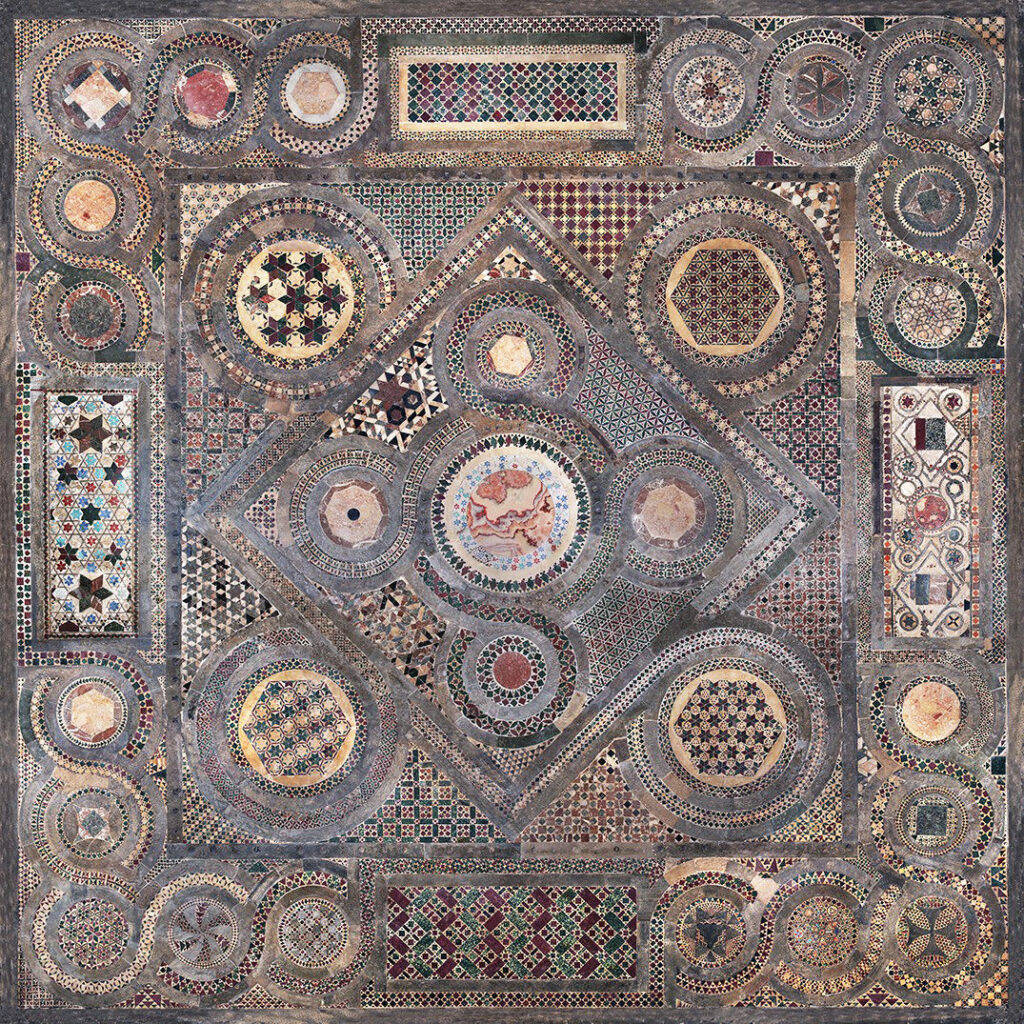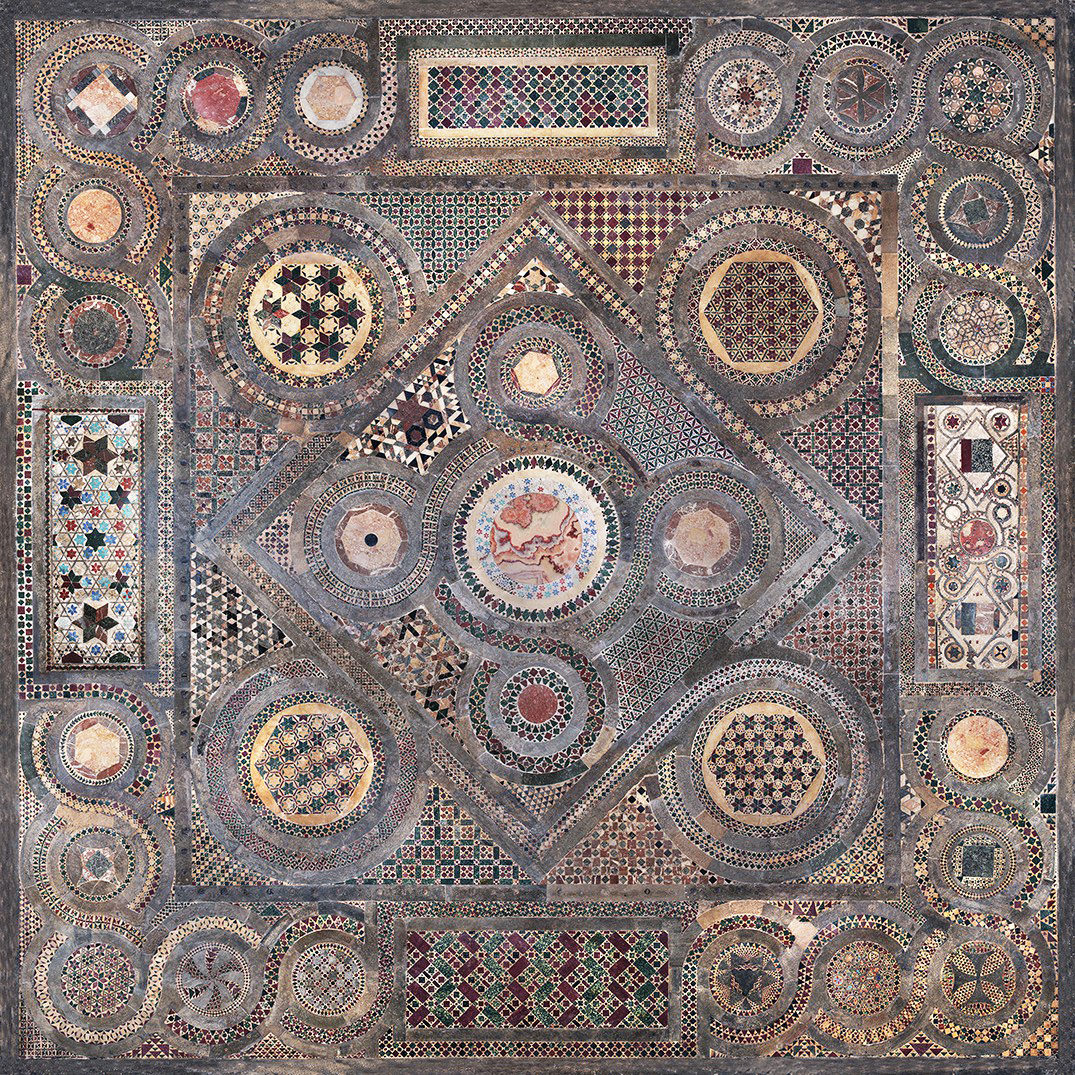In the heart of London, behind the menacing headquarters of MI5, there is Thorney Street. Looking for a guy with that name would be useless because Thorney was the name of the now forgotten island that once hosted that strip of land.

It was on this island, probably for security reasons, that in the 1140s Edward the Confessor decided to build his palace, near a Benedictine monastery founded less than a century earlier by King Edgar and St. Dunstan, a monastery that was enlarged and equipped with a large church named after St. Peter. The church became known as the west minster to distinguish it from the east minster that is St. Paul’s Cathedral.
In the image we see how it appears in the Bayeux Tapestry. The scene depicted is that of the funeral of its founder, King Edward, which took place a few days after the consecration on 28 December 1065. A year later the same church would see the coronation of William the Conqueror.

The church resisted for a couple of centuries until Henry III, infected by the eagerness of the new Gothic style, decided to rebuild it ex novo in the modern manner. On October 13, 1269, the new building was consecrated with (it is appropriate to say) set inside a small jewel: one of the rarest1 and certainly the most beautiful cosmatesque floor in England.
The abbot Richard de Ware was the one who strongly wanted those 7,5 square meters of opus sectile, as he had admired them during his stay in Anagni with Pope Alexander IV immediately after his appointment in 1258. Those fantastic Italian floors (the fascination of “Made in Italy” brand has an unsuspectedly long history) impressed him so much that on his return to his homeland he brought with him the craftsman Odorico with his good team of “tilers” and a fair amount of precious stones such as porphyry, serpentine, gabbro and others ready to be transformed into his own little dream, made even more unique by the use of unusual materials in the Italian tradition such as glass and by being immersed and surrounded by the so-called “Purbeck marble”, a dark limestone from Dorset.

For a few centuries, the floor was accompanied by an inscription (now practically disappeared) in brass characters that read:
“Si lector posita prudenter cuneta revolvat, hic finem primi mobilis inveniet. Sepes trima; canes et equos hominesque subaddas, cervos et corvos, aquilas, immania cete, mundum: quodque sequens preeuntis triplicat annos. Spericus archetypum, globus hic monstrat macrocosmum. Christi milleno bis centeno duodeno cum sexageno, subductis quatuor, anno, tertius Henricus rex, urbs, Odoricus et abb as hos compegere porphyreos lapides “2
(“If the reader considers what is established, he will find here the end of the primum mobile. The bush lives three years, add dogs and horses and men, deer and ravens, eagles, the huge whales, the world: each one that follows triples the years of the previous one. The spherical globe shows the archetype of the macrocosm. In the year of Christ one thousand two hundred and twelve plus sixty minus four, King Henry the Third, the city, Odorico and the Abbot laid these porphyry stones together.”)
John Weever’s Guide to the Abbey (1631) describes the text as being arranged circularly, most likely around the central quincunx. But why was the year 1268 written in such an elaborate manner? The answer may lie in the fact that the inscription would have been placed shortly after Henry’s death: 1212 + 60 = 1272 (the year of his death), 60 – 4 = 56 (the duration of his reign).
But what about the mysterious sequence of living beings of which each “triples the years of the preceding”? Richard Sporley, a monk at the abbey for much of the fifteenth century, explains it thus: “The primum mobile signifies this world, the age or end of which the author estimates, according to his imagination, by increasing the numbers threefold.” That is, a bush lives three years, a dog nine, a horse twenty-seven, a man eighty-one, and so on (some animals were attributed a mythical longevity). The final date is calculated based on a chronology inferred from the longevity of the creatures listed. “The round stone,” Sporley continues, meaning the disk at the center of the composition, “has in it the colors of the four elements: fire, air, water, and earth.” The floor, in other words, represents our world and the universe as a whole (which fits admirably with the symbolism conveyed by the two squares staggered 45° in which the quincunx is inscribed and of which we have already spoken here), including the date of its end that, calculator in hand, would occur in 19683 years. Assuming, not without reason, that Abbot Ware gave credit to Eusebius of Caesarea (III-IV century) and his calculation according to which the creation would be dated to 5199 BC, a very popular theory throughout the Middle Ages (it was also known to Dante), it is deduced that the world will end in 14484 (so you can safely book flights and vacations).
The position of the floor reinforces the idea that in the intentions of its commissioners it had to be a sort of mystical and spiritual center from which the divine power of the creator could radiate, reified in the earthly power of the king, and at the same time the energies and meanings of the world that was represented converged there. In fact, the composition was made in the sanctuarium, the most sacred area of the church, in front of the high altar, and the central disk must have had a particular importance inherited from the custom, attested since the fifth century3, of using the center of a quincunx as a physical fulcrum for community prayer to reaffirm by ceremonial means the centrality of man in creation. If you want to try to imagine how an ancient Christian king might have felt at that point, perhaps you should think of a sort of waterfall, a column of light coming from the unfathomable heights of the celestial spheres and beating down exactly on those few square metres with you underneath, then spreading out 360°, refracting on the imposing walls of the naves and flowing back towards the center as if that small portion of set stones were to all intents and purposes a sort of fast track towards a higher world.
Henry III did not survive his creature for long. In fact, he died in 1272, leaving his son Edward I on the throne who, strangled by the enormous military expenses and by the huge debts contracted with Italian bankers, had to drastically downsize some big factories with which he intended to continue the family building tradition.
The man who had strongly desired that rectangle of floor, Abbot Ware, wanted to be buried under it. Anciently an inscription adorned the burial: “Abbot Richard of Ware, who rests here, now bears those stones which he himself bore hither from the City”, when the City was Rome.
- Parts or traces of it can still be seen at St Augustine’s Abbey and Trinity Chapel in Canterbury and there are historical records of it at St Paul’s Cathedral
- The text comes from the history of the abbey compiled by John Flete, a monk at Westminster from 1420 to 1466
- Dorothy Glass, “Papal patronage in the early twelfth century: notes on the iconography of cosmatesque pavements”, Journal of the Warburg and Courtauld Institutes, Vol. 32 (1969), pp. 386-390
